Viewed 15382 times | words: 1444
Published on 2021-04-25 | Updated on 2021-04-26 09:30:00 | words: 1444
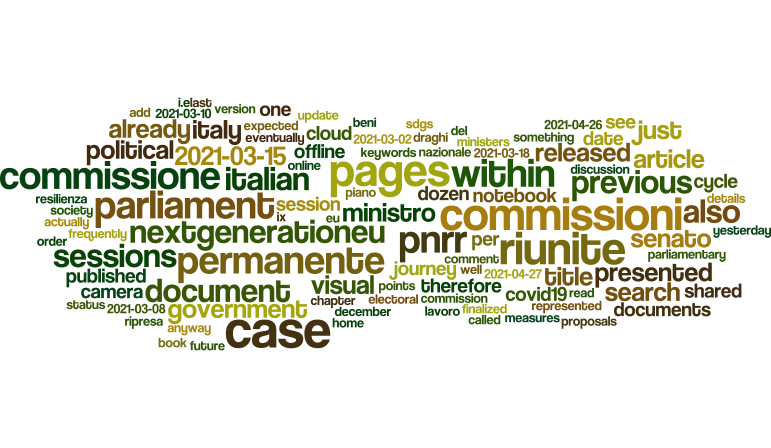
note: restructured to ease access also with smaller screens
As I wrote repeatedly over the last few days...
...I think it is worth repeating here what I posted on 2021-04-23 on my status update on Facebook:
"today's newspapers in #Italy are all sharing their own analysis on the #PNRR, the Italian proposal for the #NextGenerationEU and associated #EU funding
personally, as I already shared, I will not comment until it has passed through the #Parliament and finalized, after this necessary step, by the Government
reason? according the Italian Constitution, Italy is a representative democracy where the nations' will is expressed by the Parliament
hence, as I said since 2020, for measures such as this one that transcend the electoral cycle, having almost all the political parties supporting the Draghi Government is no excuse for bypassing the Parliament
so, until the measures will pass through discussion, vote, improvements derived from the discussion, I do understand comments (are needed for the news cycle, much shorter than the electoral cycle), but we need a political sign-off to have political accountability for the solution identified
for the time being, yesterday I released an article about more "structural" elements: we have to seize this opportunity to do something more than being just #creative about spending, we have to be creative about investing to foster a #culture of #sustainability, i.e. long-term, in a country too used to tinkering"
Actually, that status update was also re-launching my previous article, The nine islands of continuous organizational learning #NextGenerationEU #PNRR #COVID19
So, I am not going to comment- but, anyway, already started my official commentary in December 2017 (see the previous article), and reviewed briefly the documents containing the proposals presented by society and companies between October 2020 and March 2021.
Therefore, this post is just what I stated within the title.
Between tomorrow 2021-04-26 and Tuesday 2021-04-27 the President of the Council of Ministers Draghi will present in Parliament the proposed new version of the Italian proposals for the #NextGenerationEU, routinely called in Italy "Recovery Plan", and officially called by the previous Government "Piano Nazionale di Ripresa e Resilienza" (National Plan for Recovery and Resilience- in Italian, PNRR).
Well, the "convergence" with the due date of 2021-04-30 has had at least few side effects: the PNRR now got its own hashtag, #NextGenerationItalia (the title was already within athe older version that I commented few months ago), and moved from few dozen pages to 319 pages.
In December 2020 shared within a book on bureaucracy case studies that published on 2020-12-17 a chapter outlining the Italian social and economic context pre-existing COVID19, some macro-impacts of COVID19, the boundaries represented by the #NextGenerationEU, then presented some critical points in Italy, and continued by presenting the PNRR- few dozen pages, but enough to highlight some issues, and then talk about the future- using the UN SDGs as a framework of reference.
The chapter had the title "04 Looking For Directions"- and, appropriately, was just a couple of dozen pages long: highlights, as I said.
As expected (it is the "standard" approach), the 319 document goes deeper into the "what, how, when", after of course describing "why", and closes by discussing the expected macroeconomic impacts.
The title of this article is "a visual journey", and therefore, keeping to my promise to discuss only structural points, and wait for both the Government and Parliament to deliver a political sign-off on a finalized document, the following table shows a visual journey across the previous sessions involving the parliament interacting with society in a "listening mode".
As you can expect, summarizing over 4,000 pages in a visual map could make for a really complex "baseline".
Therefore, I used my routine tool: what was most frequently said in each one of the 13 sessions.
I should actually say that four were with Ministers:
_2021-03-08 Ministro dell'economia e delle finanze (198), Commissioni 5 e 14 riunite
_2021-03-15 Audizione del Ministro del lavoro e delle politiche sociali, Andrea Orlando, (14408), 5, 8 e 14 (Senato) e IX (Camera)
_2021-03-15 Ministro pari opportunità e famiglia (519), Commissioni 5 e 14 riunite
_2021-03-18 Ministro per l'innovazione tecnologica e la transizione digitale, Vittorio Colao (314), Commissioni 5 e 14 riunite
These were the "most frequently discussed items" in each session (beware: a "tag cloud" is a measure of frequency, not of importance- but eventually will add also something about relevance).
The order of the sessions is the one the document were released (i.e. the documents for the two last sessions were published in that order on the source website).
_01 2020-10-06 Parliamentary Commission: Commissioni 5 e 14 riunite
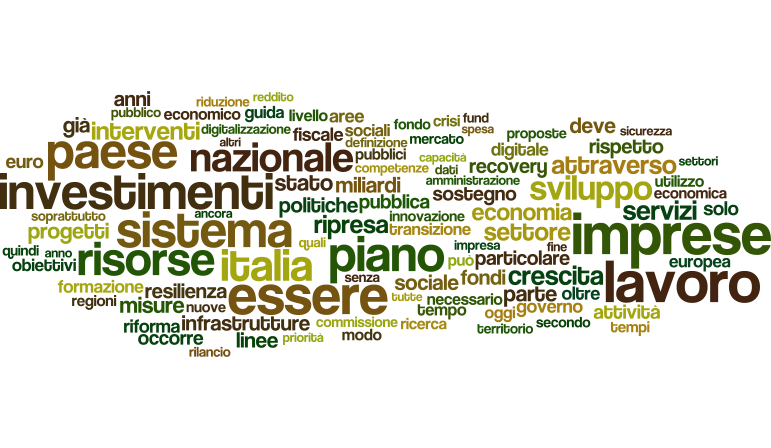
_02 2021-02-02 Parliamentary Commission: 5,6,14 Senato e V, VI e XIV Camera
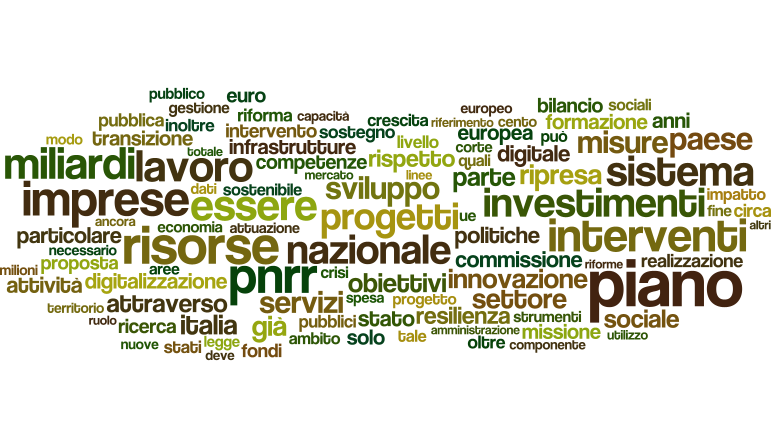
_03 2021-02-25 Parliamentary Commission: 11 Commissione permanente (Lavoro pubblico e privato, previdenza sociale)
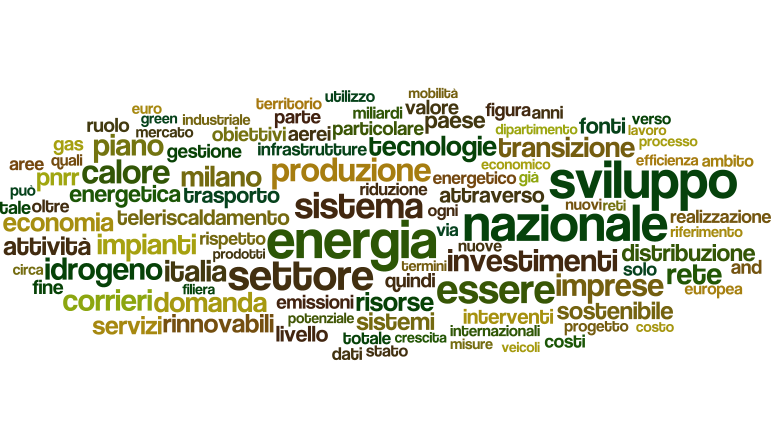
_04 2021-03-02 Parliamentary Commission: 10 Commissione permanente (Industria, commercio, turismo)
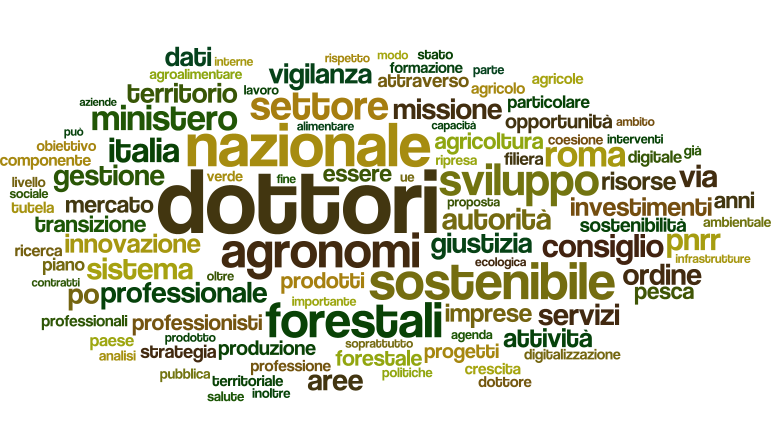
_05 2021-03-02 Parliamentary Commission: 13 Commissione permanente (Territorio, ambiente, beni ambientali)
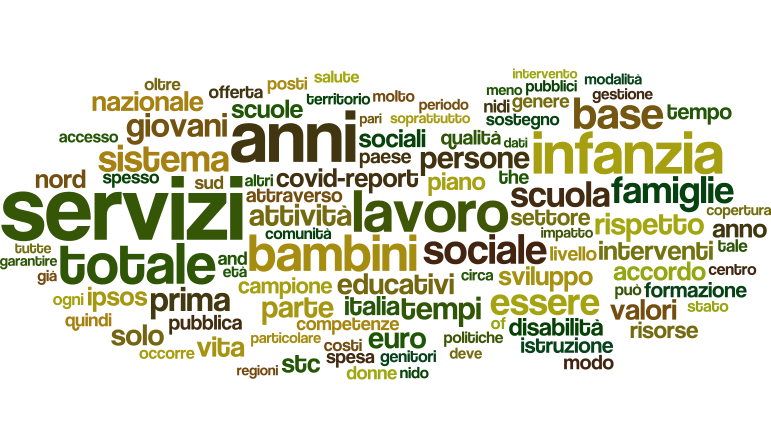
_06 2021-03-08 Parliamentary Commission: Commissioni 5 e 14 riunite
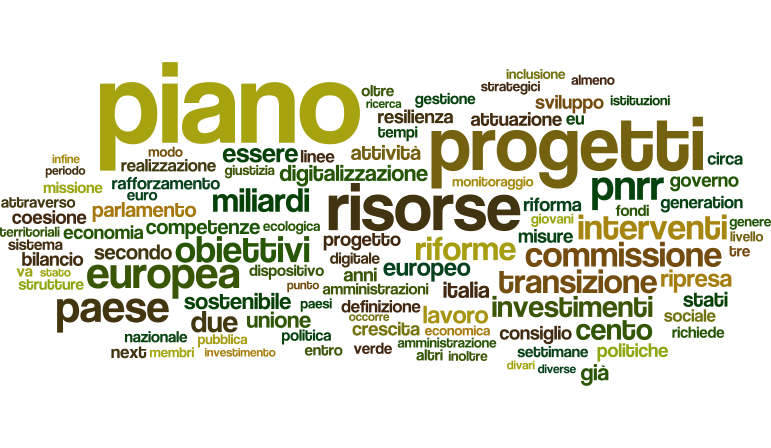
_07 2021-03-09 Parliamentary Commission: 8 Commissione permanente (Lavori pubblici, comunicazioni)
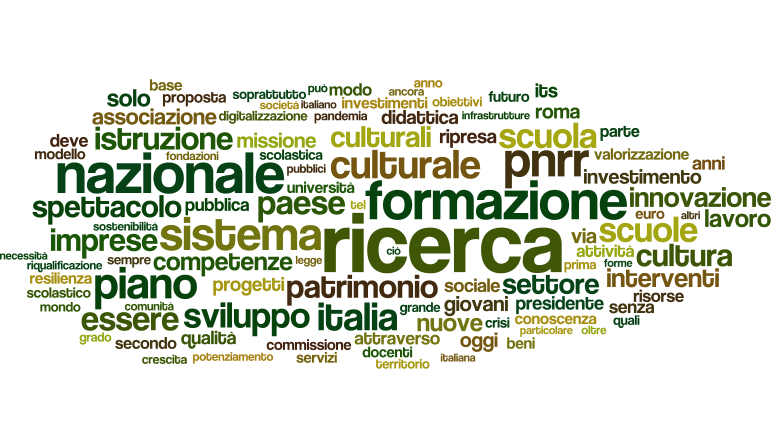
_08 2021-03-10 Parliamentary Commission: 7 Commissione permanente (Istruzione pubblica, beni culturali)
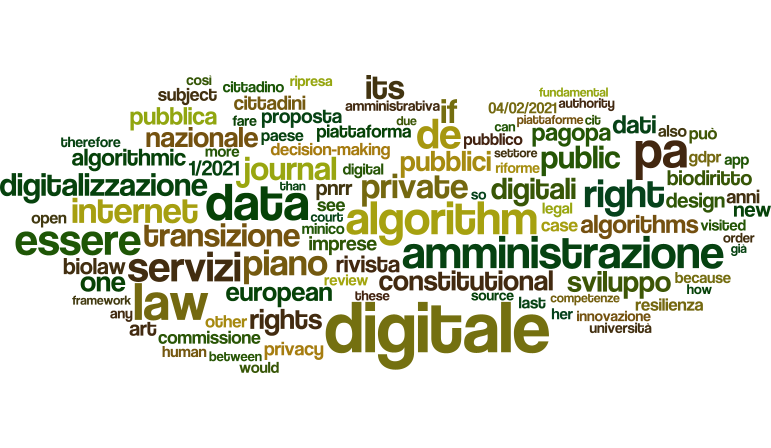
_09 2021-03-10 Parliamentary Commission: Commissioni 5 e 14 riunite
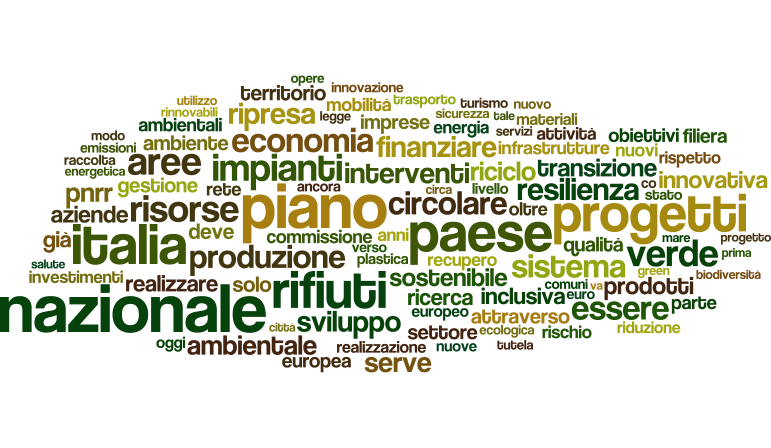
_10 2021-03-11 Parliamentary Commission: 9 Commissione permanente (Agricoltura e produzione agroalimentare)
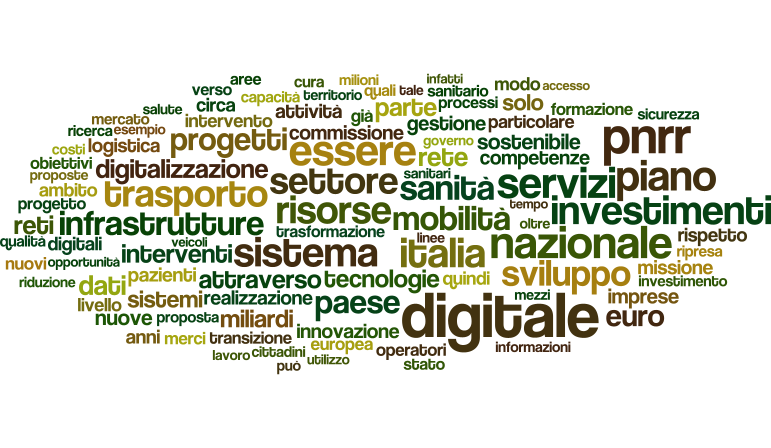
_11 2021-03-15 Parliamentary Commission: 5, 8 e 14 (Senato) e IX (Camera)
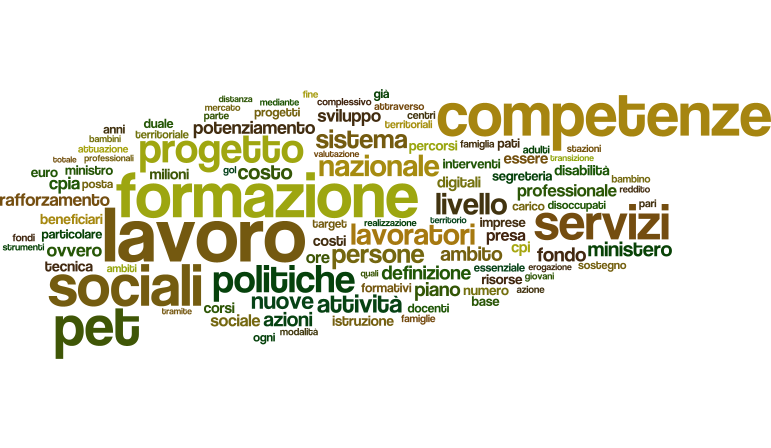
_12 2021-03-18 Parliamentary Commission: Commissioni 5 e 14 riunite
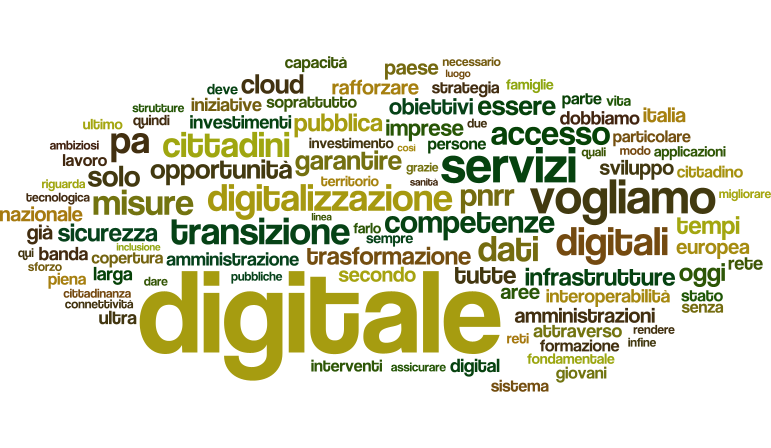
_13 2021-03-15 Parliamentary Commission: Commissioni 5 e 14 riunite
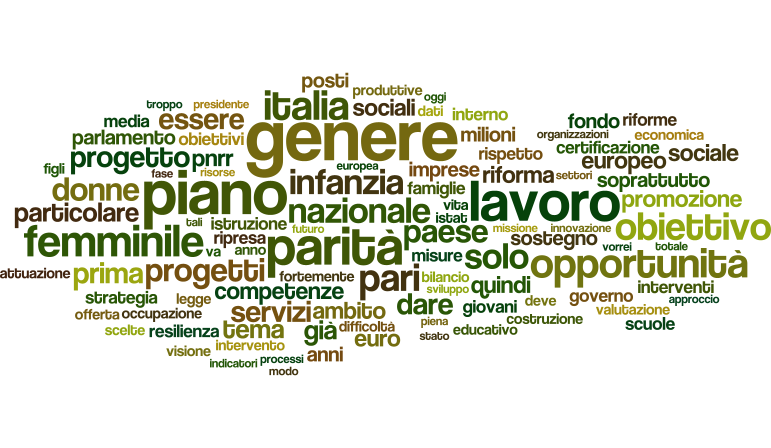
Anyway, this is just "part 1".
As a closing element before the sessions on 2021-04-26 and 2021-04-27, of course...
... the keywords represented within the 319 pages released yesterday evening, 2021-04-24.
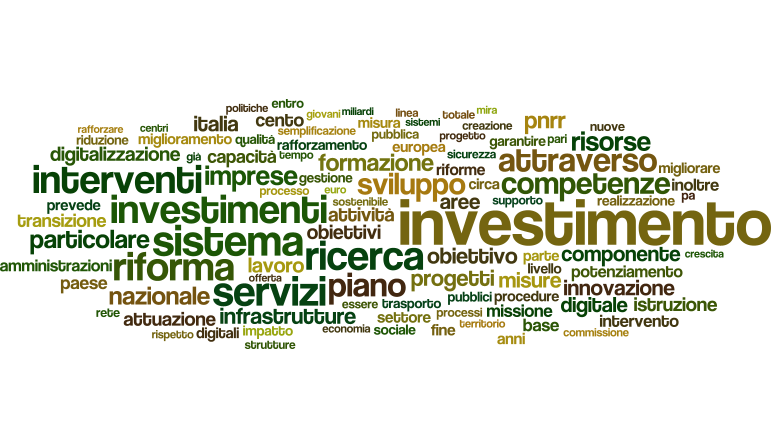
The previous documentation that I released provided more details on who presented its position when (the "what" and "how" will be for a future stage).
You can find it via the following notebook (it is a direct "windows" on the notebook- you can also copy it, or copy the data I shared online with the "log" of presentations and links to the originals).
So, if you are curious to see how many documents were presented in each session, you can have a look at the notebook.
Also, if you will visit either the notebook or this article in the future, you will see it "evolve", as I will keep adding information.
 _
_